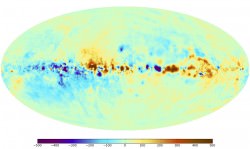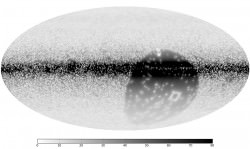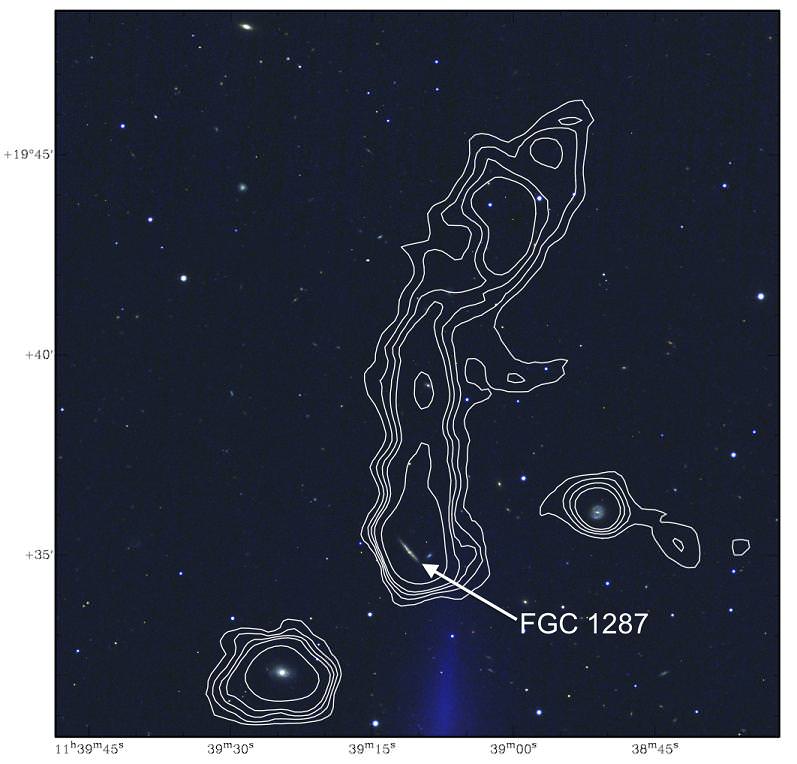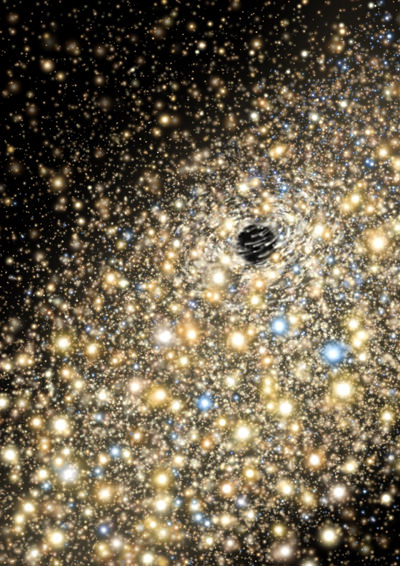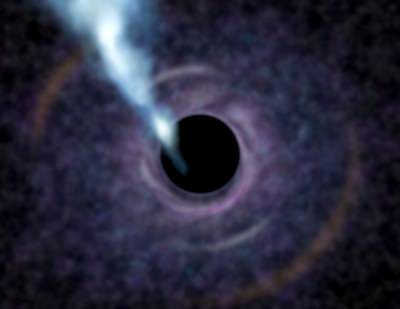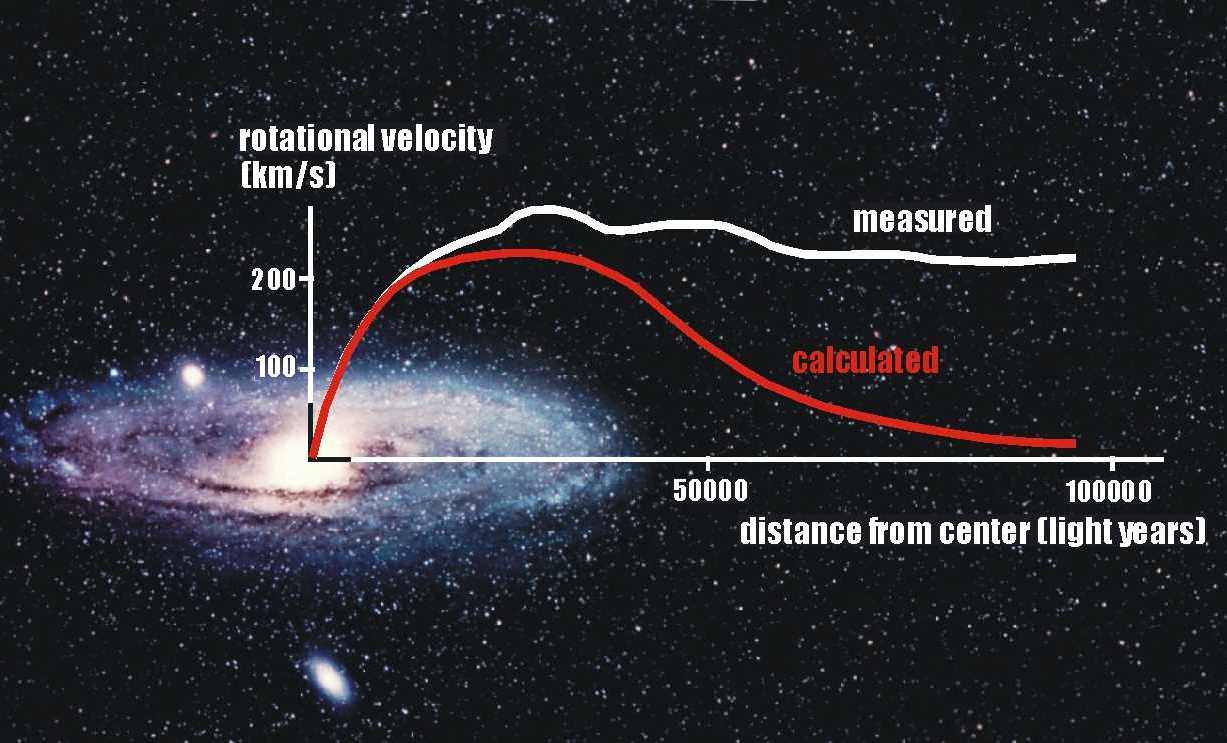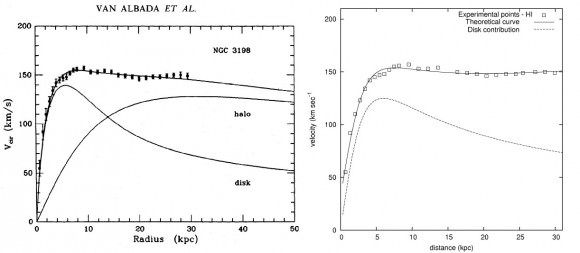[/caption]A new paper presented at this week’s American Astronomical Society conference promises to shine some light, so to speak, on the pursuit of dark matter in individual galaxies. The current model of cold dark matter in the Universe is extremely successful when it comes to mapping the mysterious substance on large scales, but not on galactic and sub-galactic scales. Earlier today, Dr. Sukanya Chakrabarti of Florida Atlantic University described a new way to map dark matter by observing ripples in the hydrogen disks of large galaxies. Her work may finally allow astronomers to use their observations of ordinary matter to probe the distribution of dark matter on smaller scales.
Spiral galaxies are typically composed of a disk, which is made of normal (baryonic) matter and contains the central bulge and spiral arms, and a halo, which surrounds the disk and contains dark matter. In recent years, surveys such as THINGS (conducted by the NRAO Very Large Array) have been undertaken to analyze the distribution of hydrogen in nearby galactic disks. Last year, Dr. Chakrabarti used such surveys to investigate the way that small satellite galaxies affect the disks of larger galaxies such as M51, the Whirlpool Galaxy. But the real prize lies in investigating what astronomers cannot see. Chakrabarti remarked, “Since the 70s, we’ve known from observations of flat rotation curves that galaxies have massive dark matter halos, but there are very few probes that allow us to figure out how it’s distributed.” She has now broadened her research to do just that.
Astronomers believe that the density distribution of dark matter relies on a parameter called its scale radius. As it turns out, varying this parameter visibly affects the shape of the galaxy’s hydrogen disk when the influence of passing dwarf galaxies is accounted for.
“Ripples in outer gas disks serve to act like a mirror of the underlying dark matter distribution,” said Chakrabarti. By varying the scale radius of M51’s dark matter halo, Chakrabarti was able to see how it would affect the shape and distribution of atomic hydrogen in its disk. She found that large scale radii give rise to galaxies with a dark matter halo that becomes gradually more diffuse as it extends along the length of the disk. This causes the hydrogen in the disk to be very loosely wrapped around the central bulge of the galaxy. Conversely, small scale radii have density profiles that fall off much more steeply.
“Steeper density profiles are more effective at holding onto their ‘stuff’,” explained Chakrabarti, “and therefore they have a much more tightly wrapped spiral planform.”
Chakrabarti’s map of the distribution of dark matter in the halo of M51 is consistent with existing theoretical models, leading her to believe that this method may be extremely useful for astronomers trying to probe the elusive, invisible substance that makes up almost a quarter of our Universe. A preprint of her paper is available on the ArXiv.






